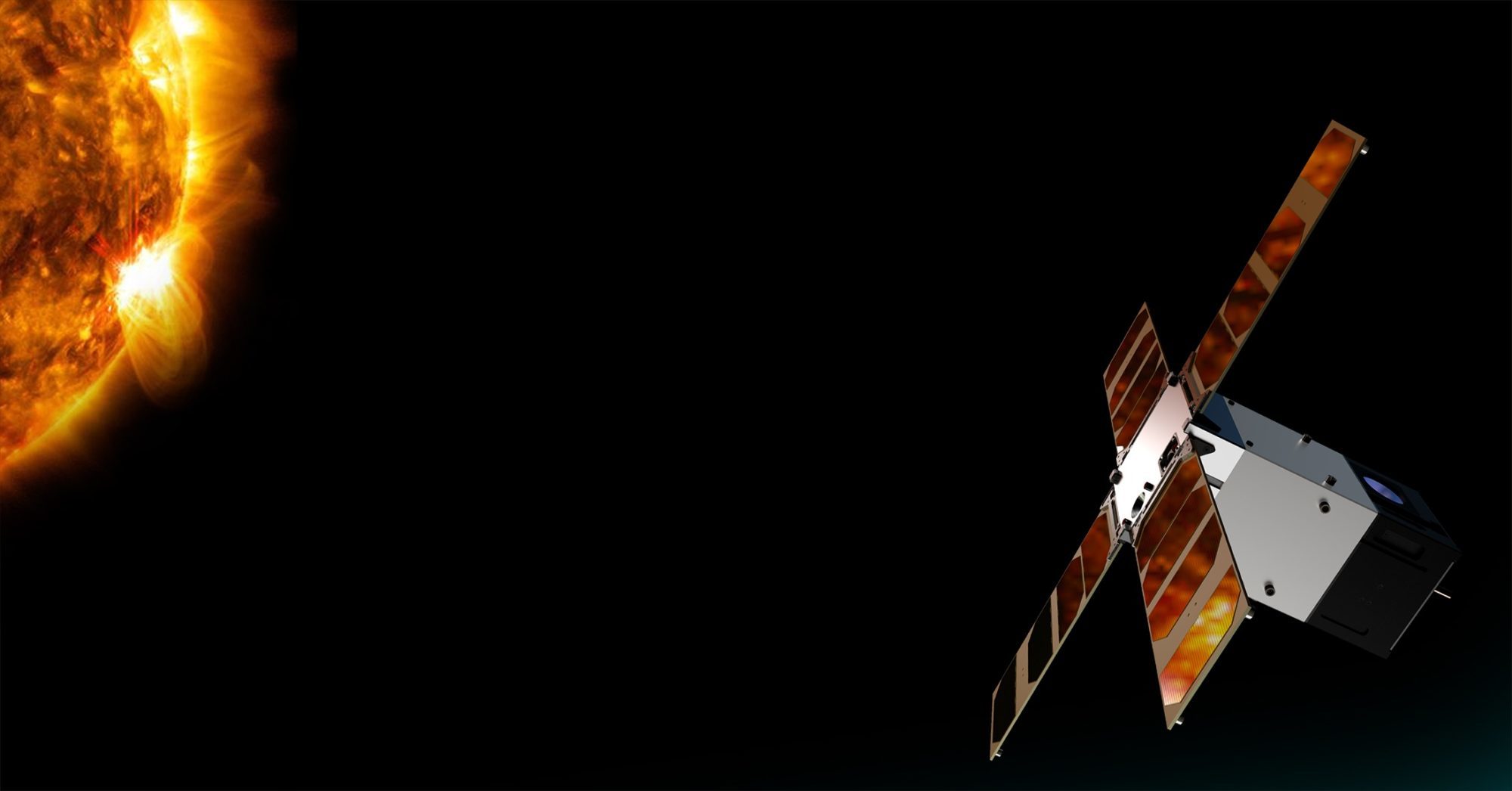Sunstorm: Mission completed

Earlier this week, our SUNSTORM mission reached its final milestone. In just 16 months, we designed and built the SUNSTORM CubeSat platform and the mission’s satellite operation and ground station services. Now, it has completed its nominal mission one year into its lifetime in orbit. We want to extend our thanks to the European Space Agency (ESA), Business Finland, The Finnish Payload Consortium (Isaware Oy, ASRO, Oxford Instruments Technologies, Talvioja Consulting), and the Finnish Meteorological Institute (FMI) for the trust they put in Kuva Space.
SUNSTORM, a 2-unit CubeSat equipped with an innovative solar X-ray spectrometer (XFM-CS) developed under ESA contracts, was launched to Sun-synchronous low Earth orbit (LEO) on August 17, 2021. The mission’s primary goal was to demonstrate the in-orbit capability of the XFM instrument to better monitor space weather phenomena. This capability will help us foresee disruptions that damage the functionality of technology devices and systems in space and on Earth.
To read about XFM-CS’s first results, head to this scientific research publication: SUNSTORM 1/X-ray Flux Monitor for CubeSats (XFM-CS): Instrument characterization and first results.
For Kuva Space, the mission sets a new precedent in how CubeSats are transitioning from high-risk proof-of-concept missions to fully operational high availability monitoring campaigns with usable scientific data. The fact that we retrieved the first solar X-ray spectrum just ten days after the launch, and the quality of the data meets the scientific requirements is phenomenal —a record pace and a remarkable achievement by any standards. This mission goes further to showcase our capability in launching and operating CubeSats that deliver scientific-grade data.
For well over a year, SUNSTORM has been collecting scientific data. One of the most noteworthy events during the mission was when the XFM-CS detected the geomagnetic storm that plunged 40 SpaceX Starlink satellites back to Earth right after launch. The data produced by SUNSTORM showed features in the activity that could help predict such costly space weather incidents. In another instance, the massive solar eruption caught in April 2022 matches the Geostationary Operational Environmental Satellites (GOES) data, which confirms the scientific grade data captured by the SUNSTORM mission.
I could not be happier with the performance demonstrated. The successes from SUNSTORM and the experiences gathered show our capabilities to run high-availability missions and pave the way for exciting new endeavors,” says Janne Kuhno, Kuva Space Lead Engineer, Co-founder.
With early promising results from the SUNSTORM mission, new XFM versions are underway for National Oceanic and Atmospheric Administration’s (NOAA) next SWFO space weather satellite, scheduled for launch in 2025. We look forward to seeing this liftoff.
As we wrap up this mission, the Kuva Space team is busy at work with the next space tech mission – building the world’s most extensive hyperspectral nanosatellite constellation. Hyperfield-1 marks our journey into space to deliver near real-time, high-resolution hyperspectral data services that help bring credibility to carbon verification markets, improve food security, and create a safe and secure planet – a new chapter in Kuva Space’s story. Stay tuned as we continue to share updates on this purpose-led mission.